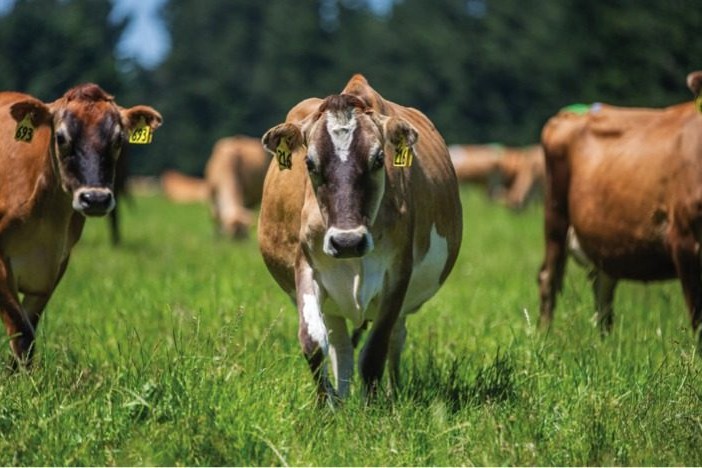Fixing milk price
Milk price risk management isn’t about trying to beat the market, it’s about having a downside protection tool, says Nigel McWilliam of MBS Advisors. He recently spoke about the fundamentals of milk price fixing and how farmers can use tools to lock in a portion of their milk at a price that protects the farming business. Words by Anne Lee.

With Global Dairy Trade prices on the rise through the back-end of 2020, farmers could be forgiven for thinking earlier moves to lock in a portion of their milk price may have been folly rather than fortune.
But Waikato-based MBS Advisors director Nigel McWilliam, from Morrinsville, says milk price risk management isn’t about trying to beat the market, it’s about having a downside protection tool.
Nigel talked about the fundamentals of milk price fixing at a Smaller Milk and Supply Herds (SMASH) webinar in December, along with Fonterra innovation manager Satwant Singh.
He says a fixed milk price contract is an agreement between a buyer and a seller on the delivery of a product at an agreed date in the future where the price is agreed today.
It effectively takes 15 months for farmers to receive full payment for their milk, and volatility in milk price even within seasons can make planning and running a well-managed, profitable business tough.
As a shareholder in a South Island dairy farm, he says he too felt the pain price volatility can bring when early season forecasts had been for north of $7 but ended up at $3.90/kg milksolids (MS).
So many things can affect milk price over the 15-month period that even well-informed market participants don’t see coming.
Demand fluctuation, climate risk onfarm, currency volatility, changes in world milk production, trade restrictions or geo-political instability, not to mention a global pandemic.
Using tools such as Fonterra’s Fixed Milk Price or NZX’s Milk Price Futures enables farmers to lock in a portion of their milk at a price that protects the farming business.
Fonterra’s Fixed Milk Price is a good entry tool and a way to develop an understanding of how price risk management works while the NZX product is a little more complex but can be more flexible.
Seeking tailored advice for your specific situation is a must, he says.
Satwant says Fonterra’s Fixed Milk Price has been designed so that the farmer-facing tool is quite simple.
Farmers have 10 opportunities throughout the year to fix the price for up to 50% of their milk with milk price fixing events carried out online in each month from March through to December.
The price offered at each event is based on the average of the daily settlement price of the NZX Milk Price Futures contract for three days following the first GDT auction of the month.
Fonterra has a set percentage of the total milk supply available so if there’s strong demand from farmers they may not be able to fix the full amount they apply for.
A 10c/kg MS service fee is charged to cover trading costs.
Satwant says to participate farmers must have the correct login details from Fonterra and be a farm owner.
Checklists and key considerations are posted on the website but farmers should also do their homework and seek advice from their financial advisors, she says.
Nigel says that advice should include understanding the tax implications.
Given it’s a known contract as defined under the Tax Act– so you know what you are going to get in terms of expected income – there will be implications for bringing retro payments into the current financial year, he says.
Farmers should take a considered approach to managing their income rather than going for the default and waiting for the milk cheque to come in.
“If you choose not to participate and manage milk price risk once you’ve considered the options then that’s an active strategy in itself,” he says.
The first step no matter what direction though is to establish your breakeven milk price.
As an example:
Farm working expenses $3.40
Grazing $0.40
Labour and wages of management $1.00
Debt servicing $1.50
Tax $0.10
Drawings $0.50
Total $6.90
Minus
Stock sales $0.50
Dividend $0.05
Breakeven milk price $6.35
So, $6.35 is the milk price the farm must achieve and the number used when determining a milk price risk management strategy, he says.





